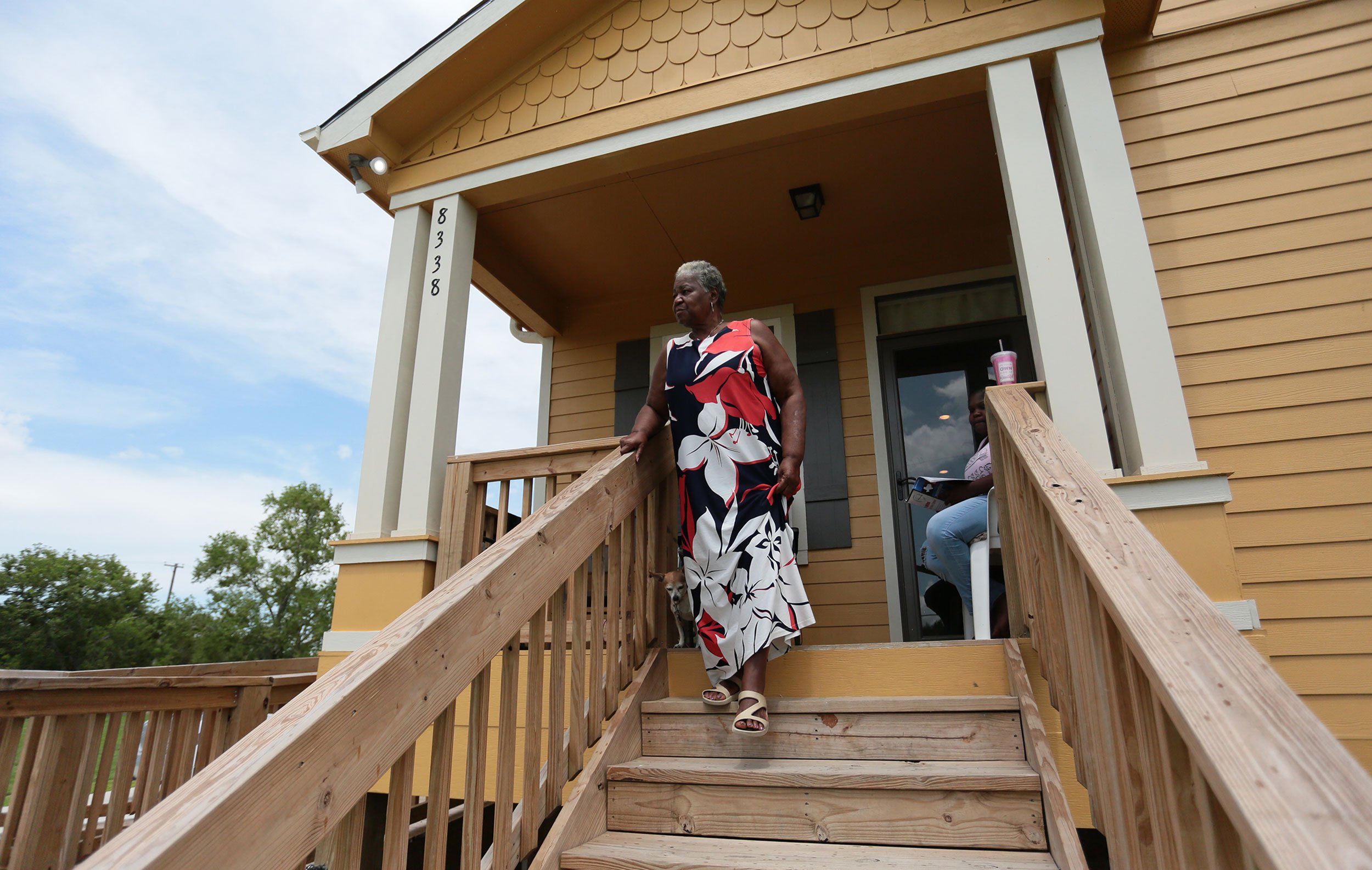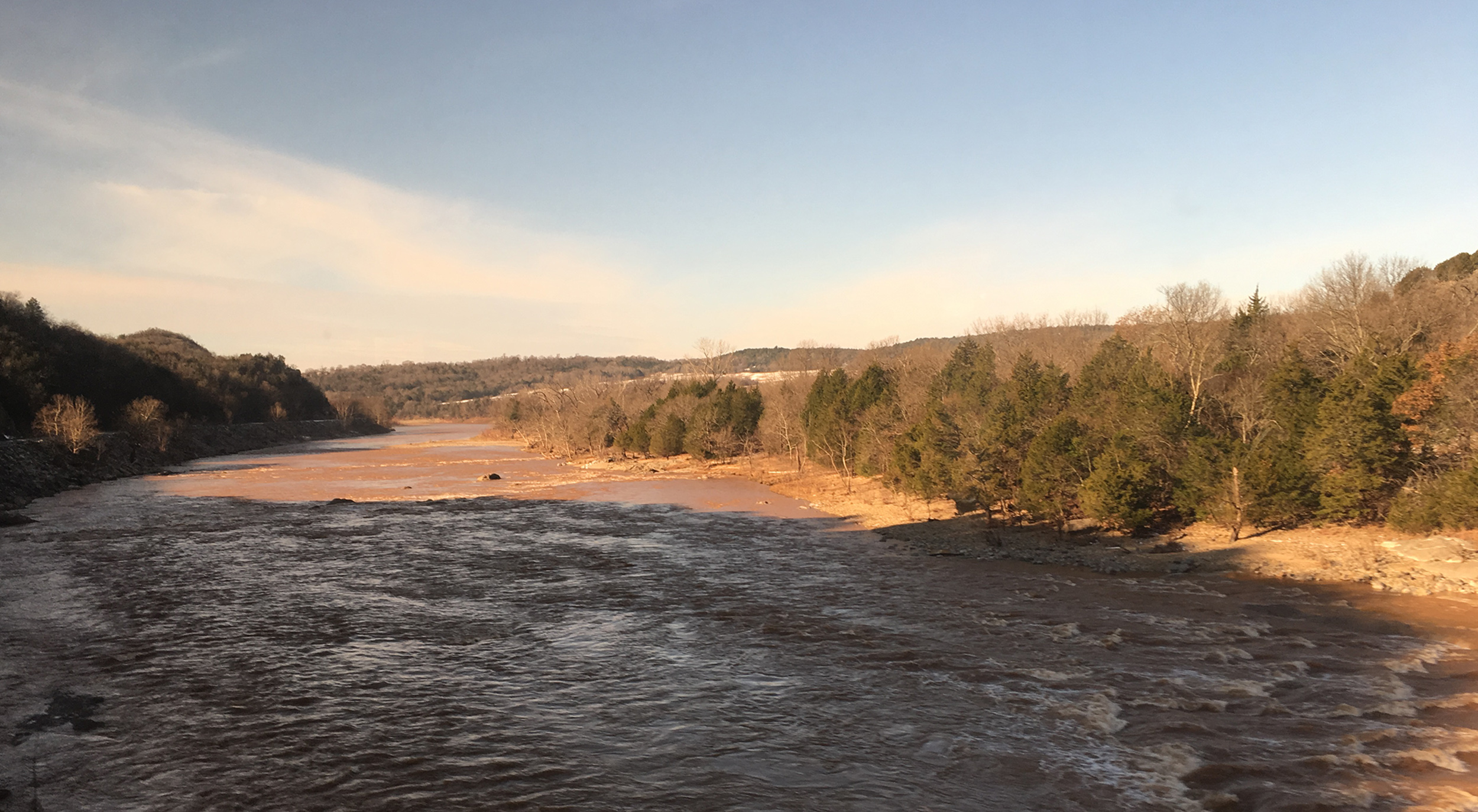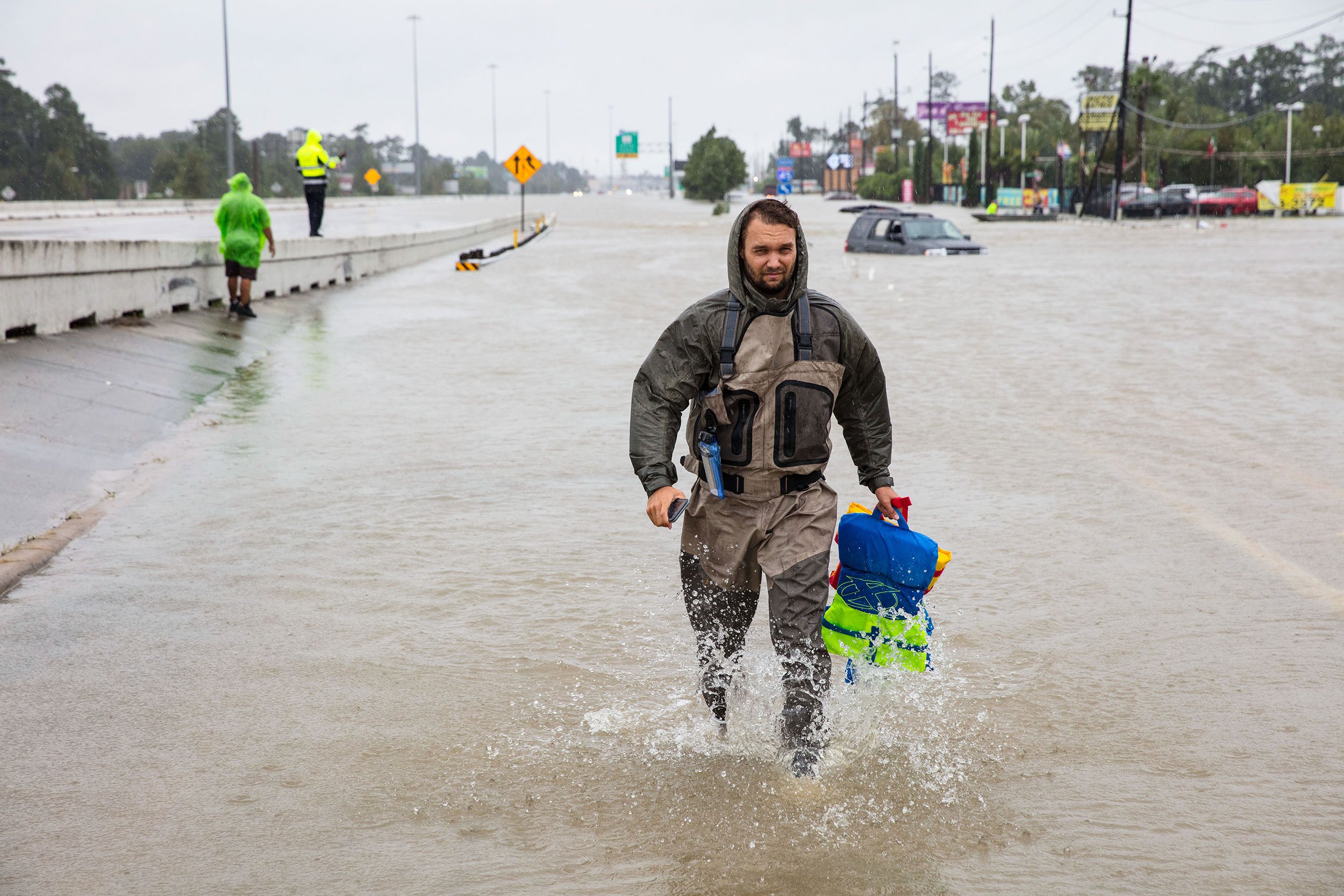
Two Houston Archives Gather Harvey Memories for Historians of the Future
They’re a time capsule of the destruction wrought by the deadliest storm to hit Texas since 1919.

Above: Three rescuers on a street with a flooded car.
In a photo taken shortly after Hurricane Harvey swamped Houston two years ago, a black luxury SUV sits submerged in murky brown floodwaters. In the background, a yellow construction crane hangs over a half-finished building—evidence of the city’s insatiable appetite for growth juxtaposed with the damage exacerbated by that growth. Another photo shows a battered mesquite tree in Woodsboro, 170 miles southwest of Houston, eerily coated in white tufts of cotton blown across its branches by 130-mph winds. A third image is a collage of cell phone screenshots, each showing the home screen obscured by endless emergency alerts. And then there’s a poem written after the storm by a fourth-grader named Jay. “Floods are thieves that made my favorite cow, Cursey, die,” reads the first line.
These are a few of the roughly 2,300 artifacts in two Hurricane Harvey time capsules: The Houston Flood Museum and the Harvey Memories Project. Both are online-only, open-access archives, and they’re still growing. Together, they provide a compelling snapshot of the destruction wrought by the deadliest storm to hit Texas since 1919. They’re also meant to endure for decades as a resource to future scholars and community members.
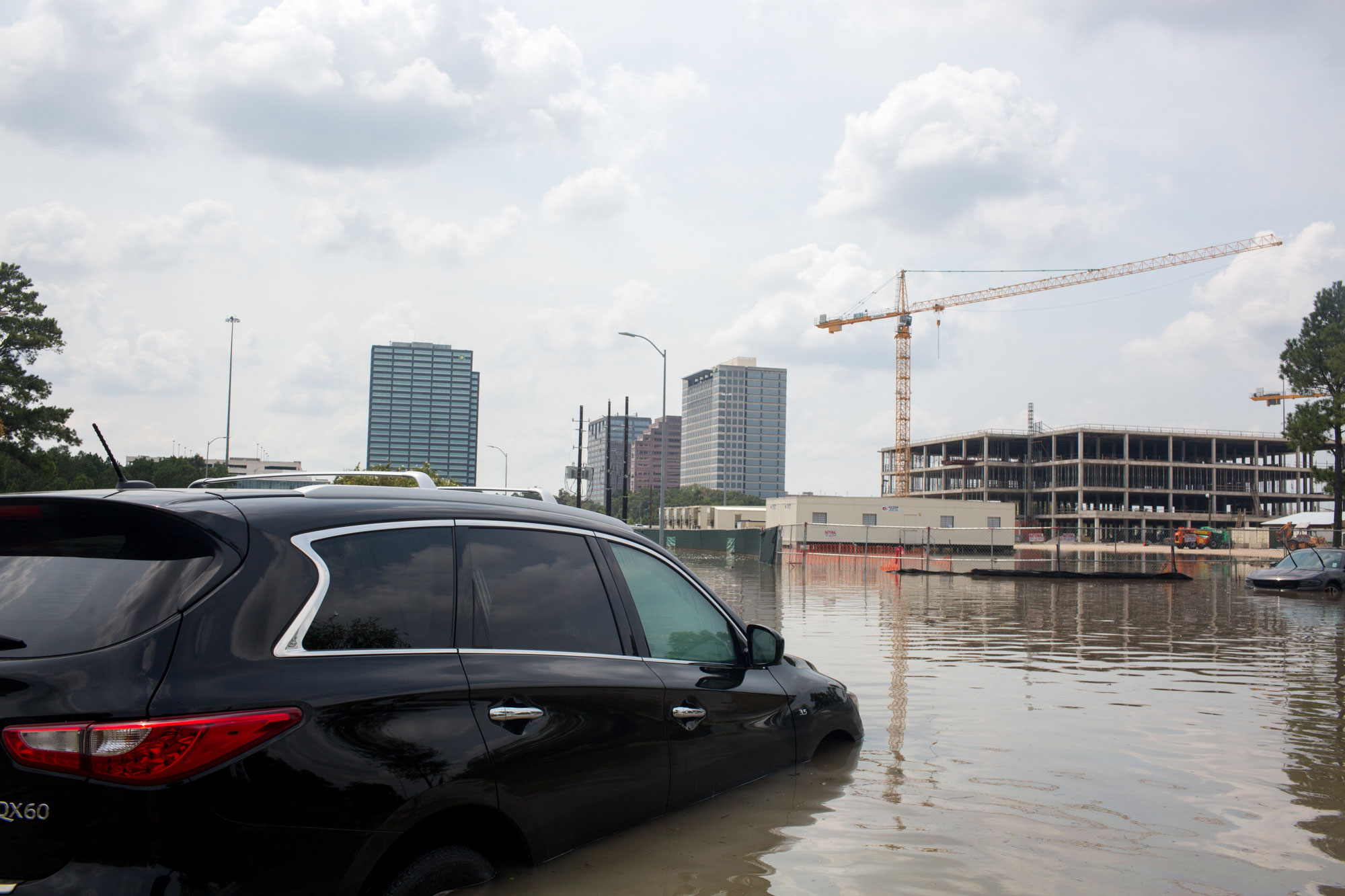
“I think historians recognize how fragile and precarious archives are,” said Caleb McDaniel, a professor of history at Rice University, where the Harvey Memories Project he co-directs is hosted. “People take lots of photos on their phone, but that doesn’t necessarily mean they are preserved. It wouldn’t be a trivial exercise to go back and find pictures posted on Twitter during the storm, for example. We want to make sure that as file formats change, and as the public’s attention moves on, someone’s still taking care of this material.”
To that end, all 1,400 items in the Harvey Memories Project are tagged with searchable metadata, such as the image’s location, date, time, and a description. Photos make up the bulk of the collection, but the project also compiles videos and written accounts. The site leaves viewers with an exhaustive sense of the storm’s impact: There are 98 photos of the damage to the historic Alley Theatre, from the cracked stage to a pile of sodden tickets; 73 photos of the Barbara Bush Branch Library in Spring being mucked out; and 58 photos of roofless homes and debris piles in Baytown.
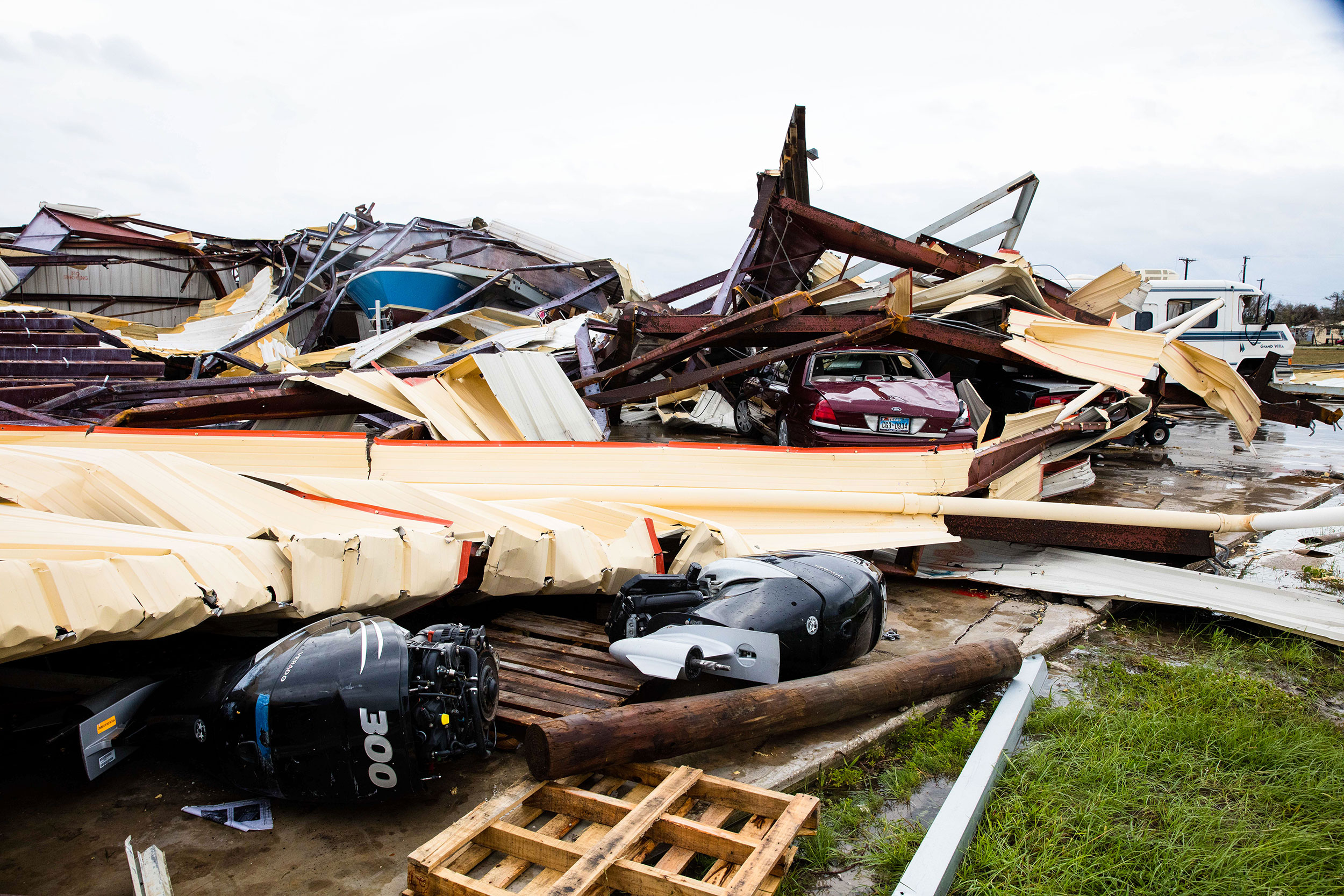
There are reminders, too, of the vast, impromptu volunteer ecosystem that sprang up after the storm: people filling trays with dog kibble for displaced pets at the George R. Brown Convention Center, pulling up hardwood from flood-damaged homes, and knocking down drywall.
If the Harvey Memories Project is an online library, the Houston Flood Museum is a sort of digital museum. The site is beautifully designed and contemplative, in part because it’s run by a team of creative writers. The museum grew out of viral Facebook missives that author and Rice English professor Lacy Johnson wrote during the storm. For Johnson, whose essays deal with trauma and environmental justice, Harvey was inherently political. “My husband was out rescuing our neighbors … and this is all happening while the Trump administration was changing DACA legislation and denying help from Mexico,” she said. “I was using Facebook to think through what was happening. People asked me to make the posts public, and then I’d wake up to see they’d been shared thousands of times.”
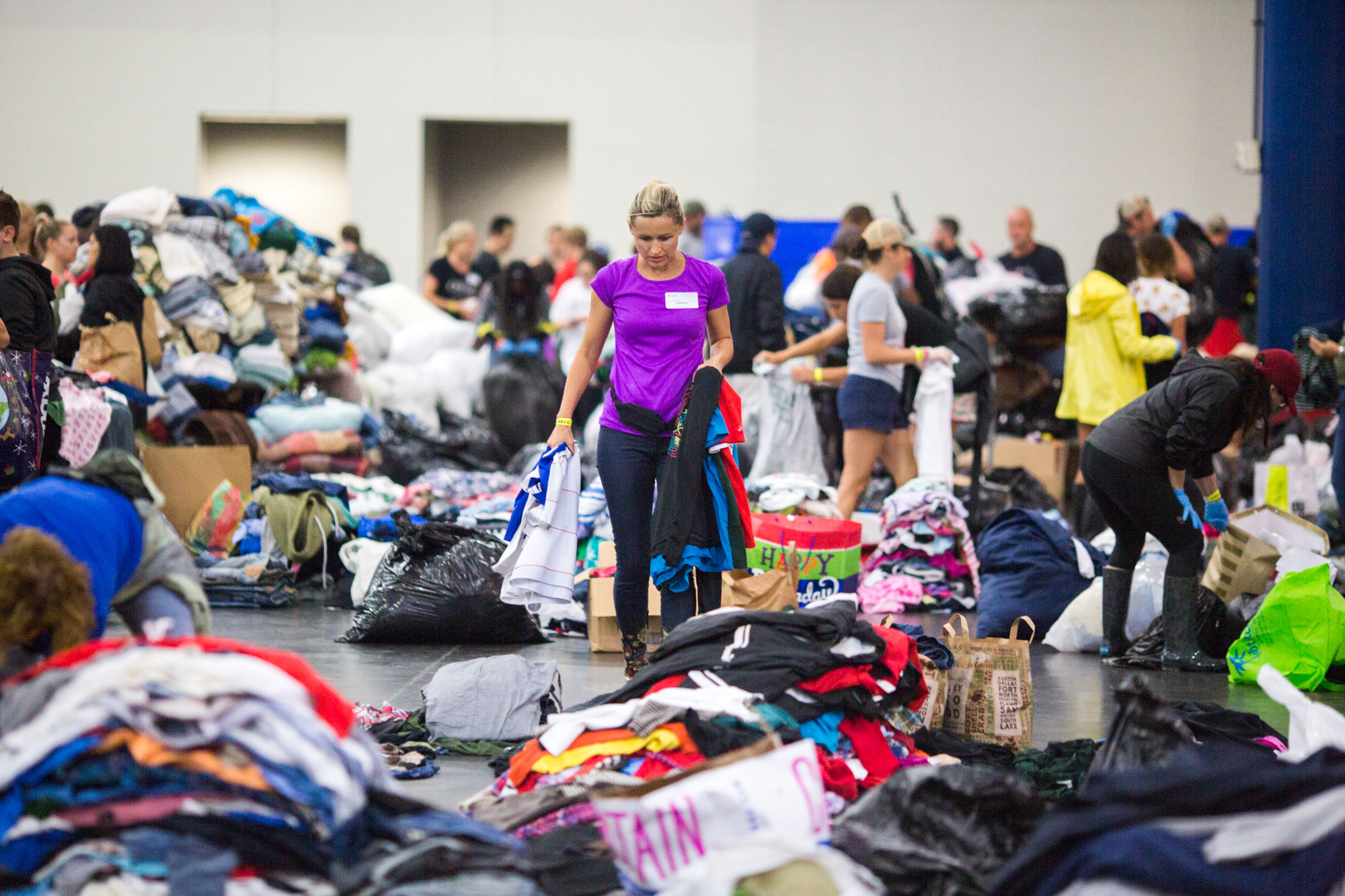
Johnson partnered with the Houston Endowment—a foundation that works to fight inequality— and a slew of other organizations to start the museum, whose contents are wider-ranging than the Harvey Memory Project’s: Oral histories, radio stories, satellite maps, poems and essays by kids. Johnson is now preparing materials from a Harvey writing workshop conducted in the Harris County Jail.
And when the next big storm hits, the museum will catalog it, too. “We will have more storms like Harvey, not less, so it is urgent to think through how our activities contribute to catastrophic flooding and how those are linked to wealth inequality and racial disparity,” she said.
What will historians of the future think of these archives—relics from a time after climate change had begun to reshape our lives, but before those in power had done much about it?
“I hope there are historians 100 years from now,” Johnson said. “Houston has a lot of reckoning to do with the ways we’ve contributed to these catastrophes.”
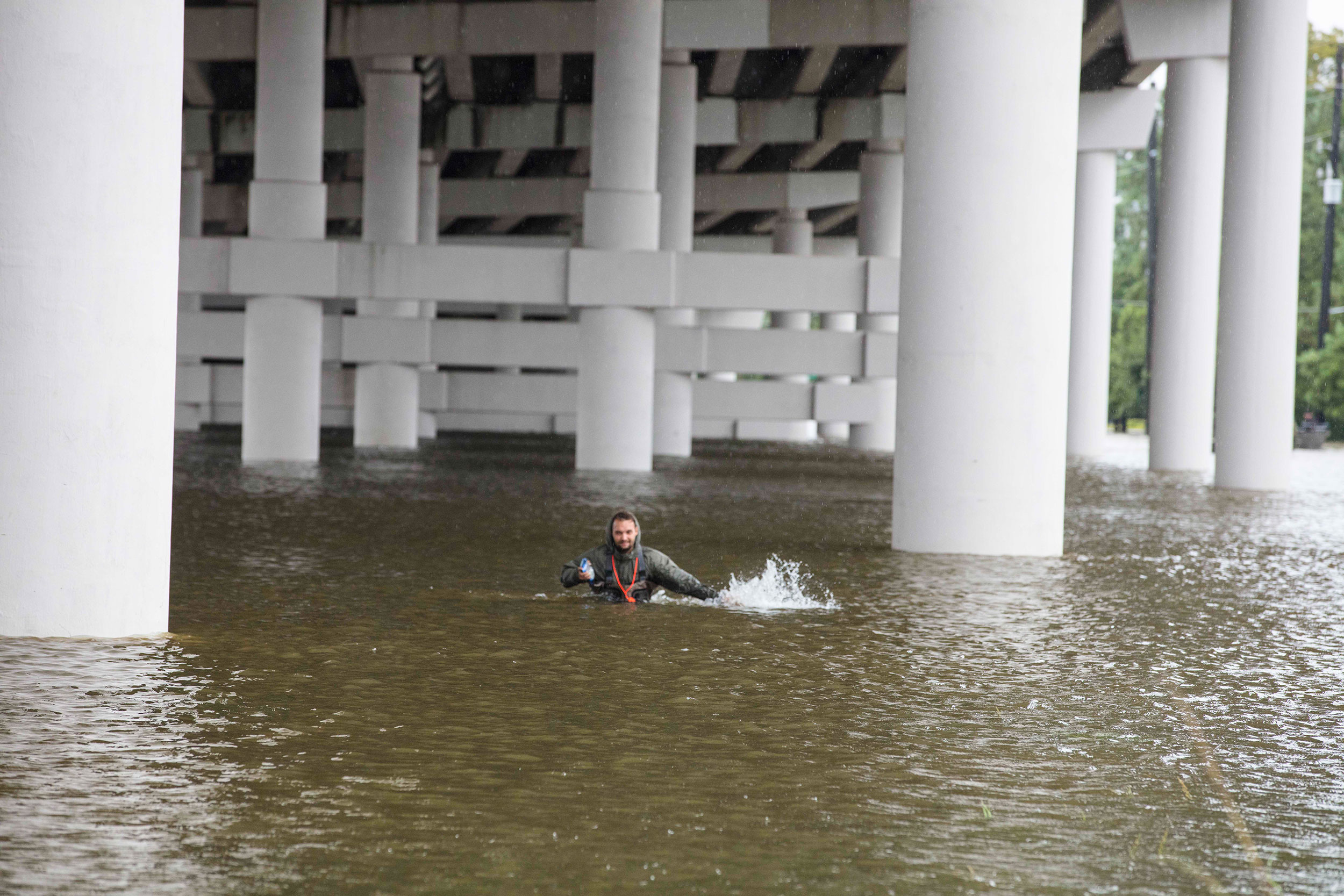
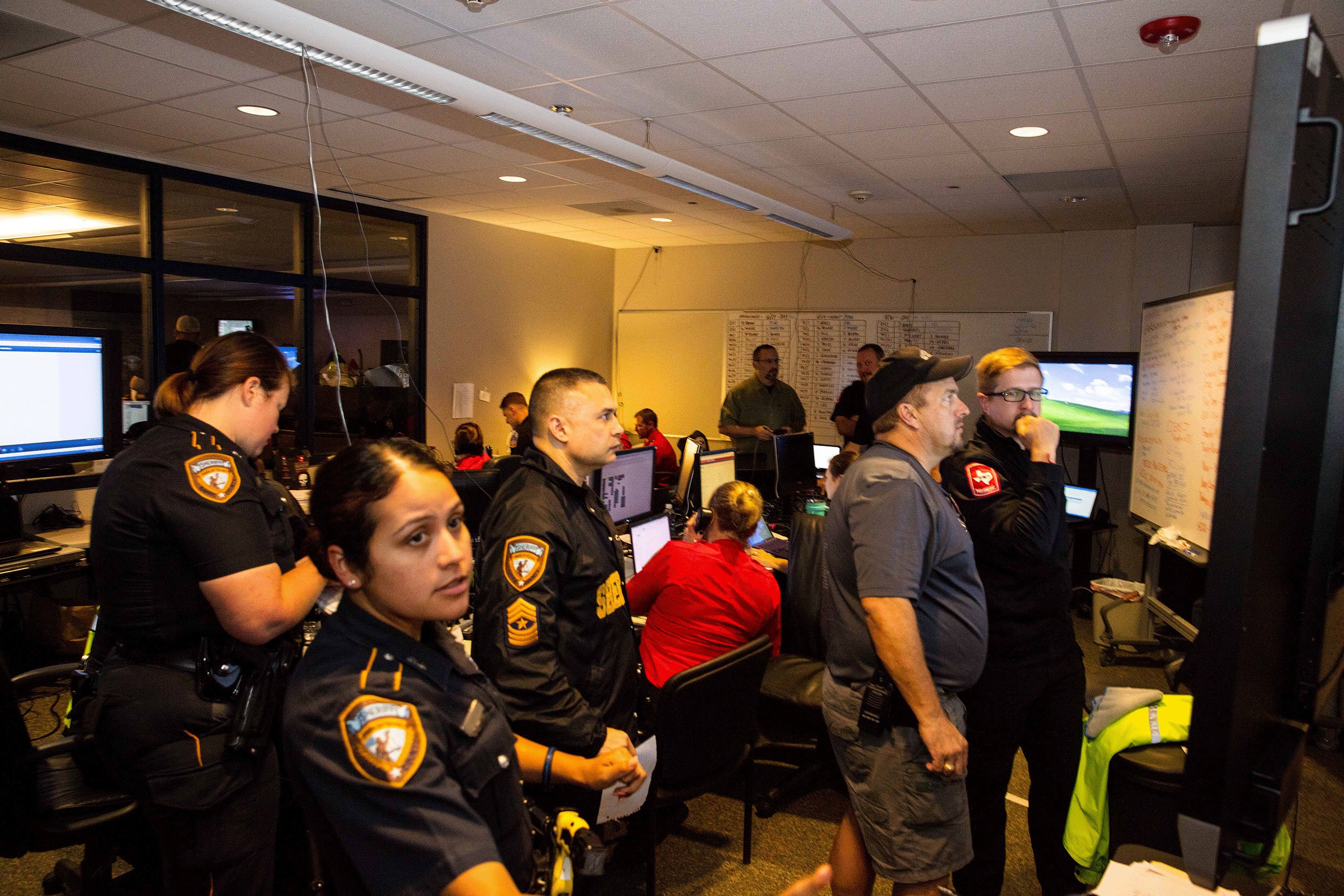
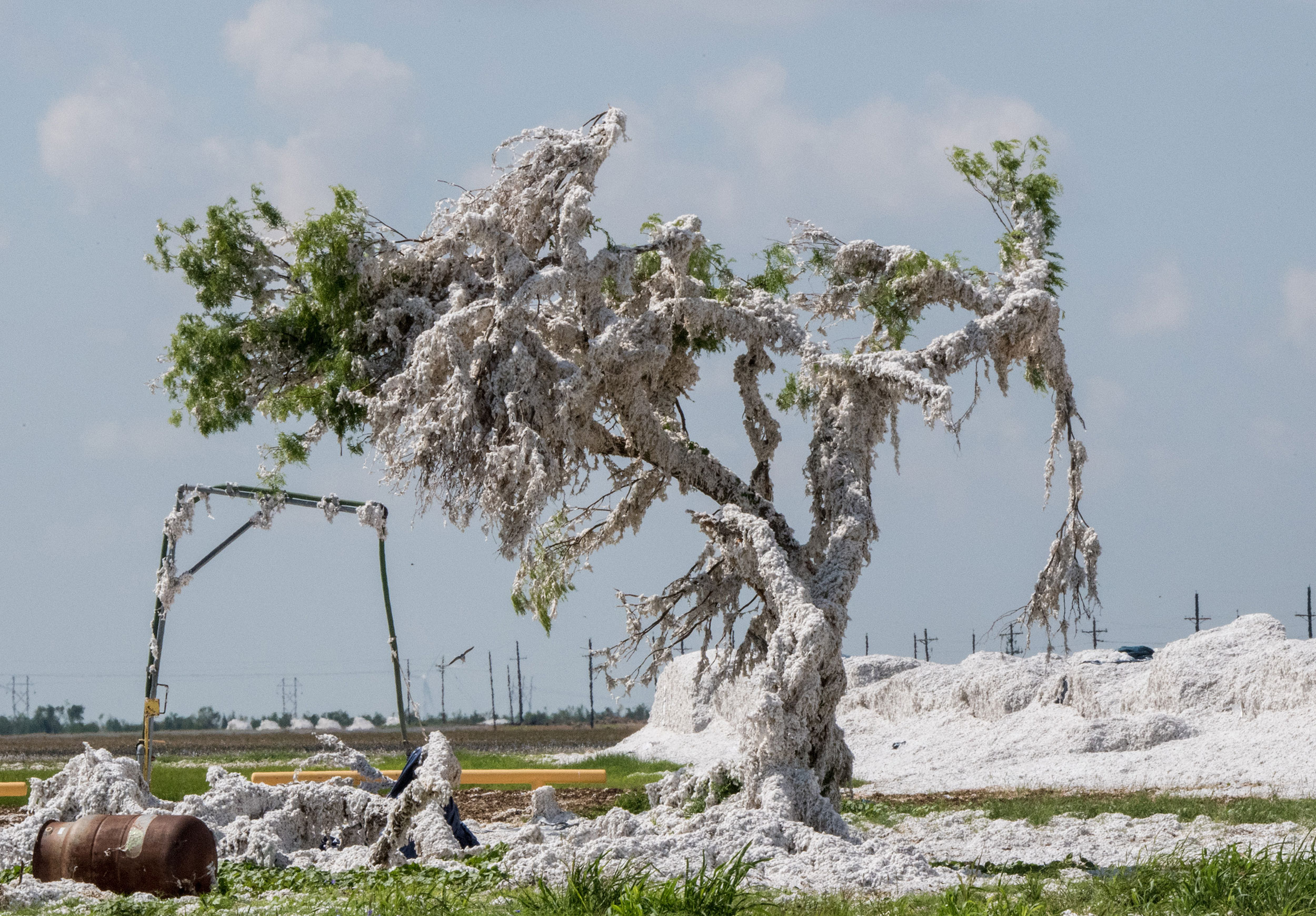
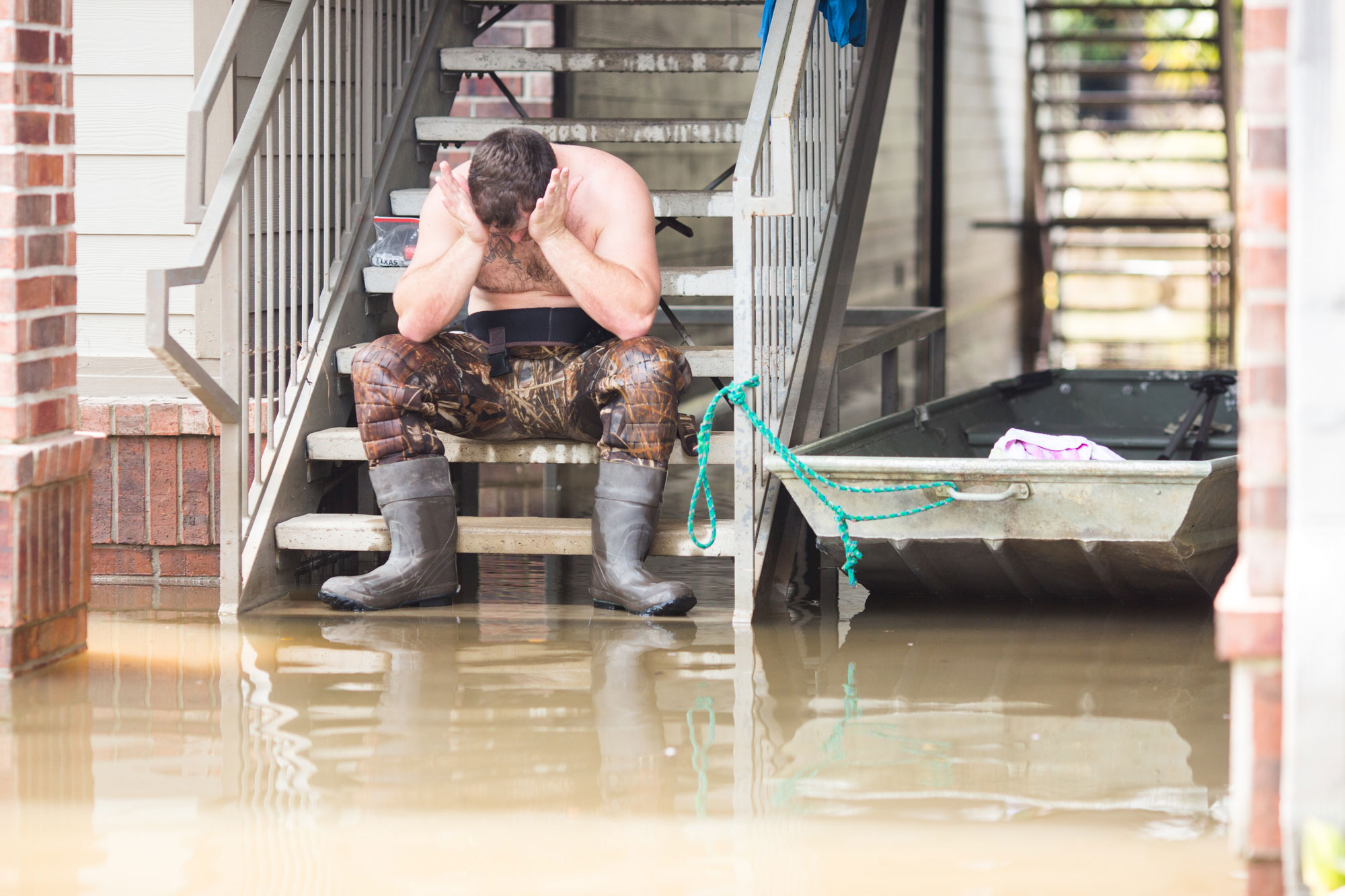
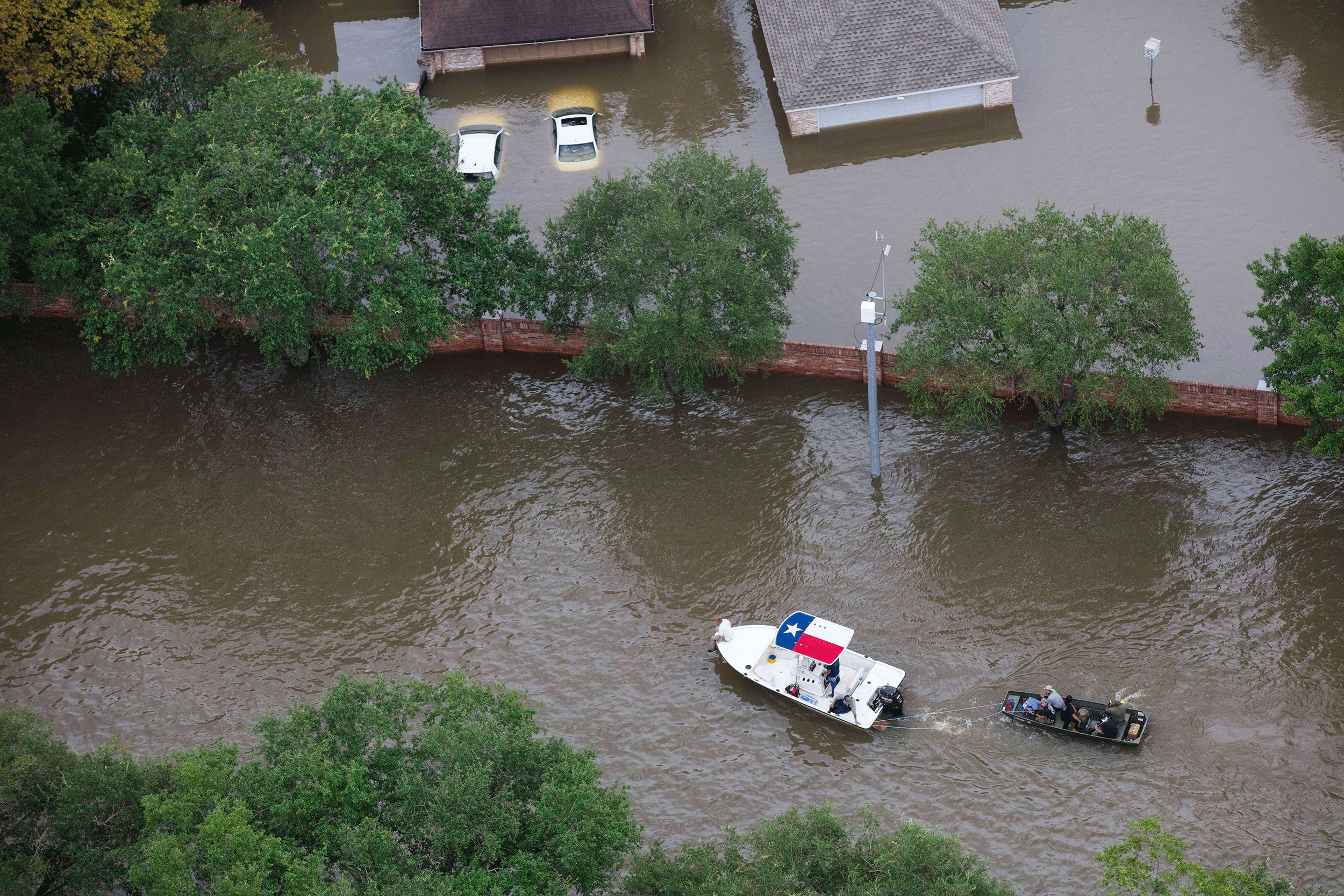
Read more from the Observer:
-
Could Trump’s Reelection Campaign Turn the Texas House Blue? A number of high-profile GOP electeds are throwing in the towel in advance of the 2020 election cycle—with more expected in the coming year.
-
‘My Congregation Trusts Women’: Progressive Faith Groups Counter Anti-Abortion Narratives: Conservative Texas groups and lawmakers have cited their faith to back abortion restrictions, but polling shows that majorities across many religions actually support abortion rights.
-
More Highways, More Problems: Highway expansion is the Lone Star State’s status-quo solution to easing traffic—but it actually leads to more congestion and displaced communities.
